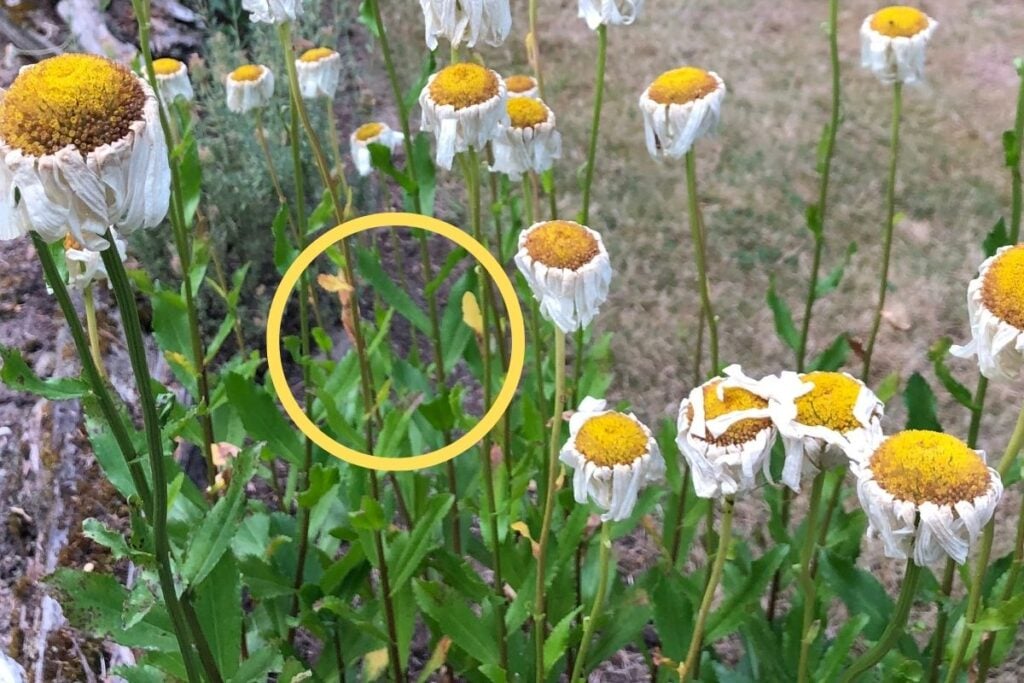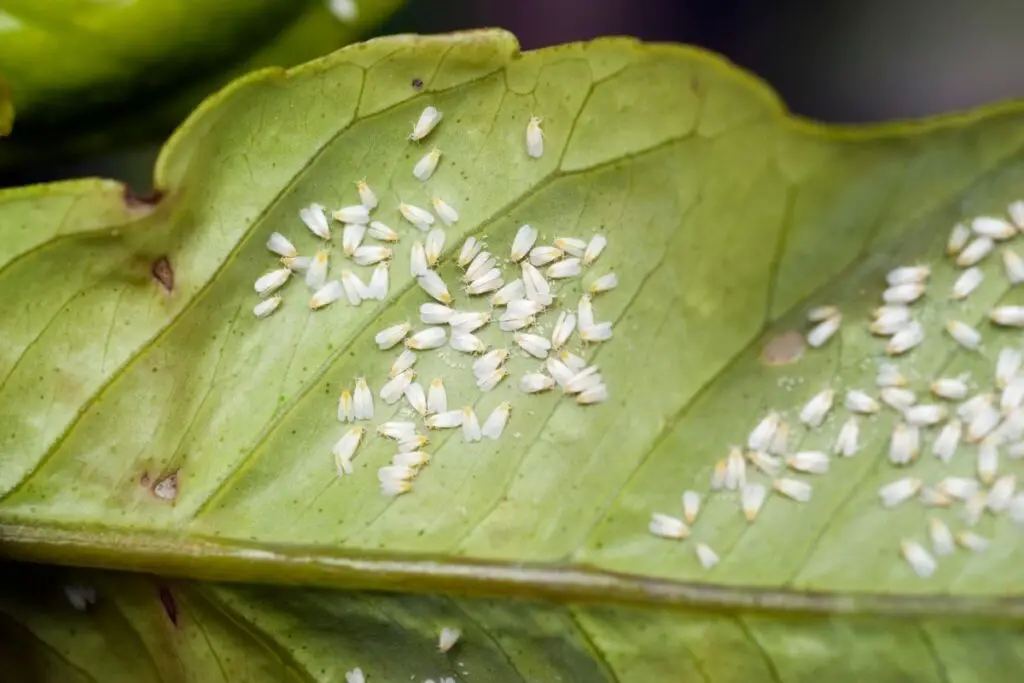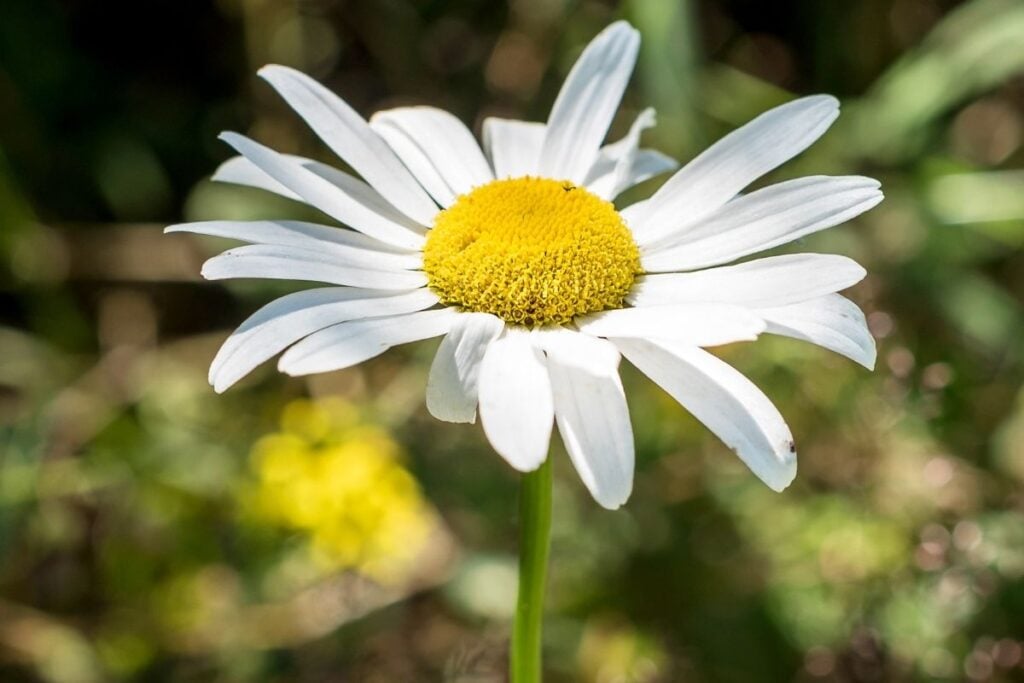Daisies are known to be sturdy outdoor plants that thrive in almost all conditions. But it is not easy for every outdoor gardener to make them bloom in all the seasons.
Keeping the daisies thriving and healthy can be a challenge for beginners, and one common problem every gardener’s faces are yellow leaves in daisies. First, you will need to know what causes the leaves to turn yellow in daisies and then how to fix it? So let’s dive into it!
The most common reason for yellow leaves in daisies is overwatering. The excess water prevents the roots from absorbing nutrients from the soil, and due to this reason, the daisy plant can fall sick, and its leaves start turning yellow. Pests infestation can also be a cause of yellow leaves.
So, if you find your daisies sick with yellow leaves you need to check if it is overwatered or pest-infested. There might be various reasons apart from these two, and you will need to determine the exact reason for which the leaves of your daisies are becoming yellow.
Let us discuss the causes due to which your Daisy leaves are turning yellow.

Why are my daisies turning yellow?
Various reasons can cause yellow leaves in your daisies. However, you should begin with checking the soil’s moisture and finding out whether your plant is getting enough sunlight. After this, you can check other reasons like pests, temperature, humidity, etc.
Overwatering
Maximum cases of yellow leaves are due to overwatering. Daisies love to stay under the sun all day, and due to this reason, people tend to water it every day, assuming that the moisture is drying up quickly. But daisies can easily stay up to a week without water.
Daisies don’t like their roots to be drenched in water for a long time as they love good draining soil with a little bit of moisture. If the soil is holding up water for a long time, the roots don’t get enough space to breathe, and neither can they draw all the nutrients from the soil.
Such a situation can cause root rot, and it can lead to the starvation of the plant because the roots cannot transport the nutrients required by the plant. The effects are visible on the leaves as they start becoming yellow.
Low humidity level
During winters, the air is dry, and daisies, being outdoor plants remain in the sun for a long time. In such conditions, the plant can lack humidity if it is not watered for long.
As the humidity levels drop, the plant’s leaves start drooping and curling, eventually leading to the yellowing of leaves.
Lack of sunlight
If your daisies are planted under the shade of a tree in your garden or backyard, the chances are that they are not getting enough sunlight.
Daisies love direct sunlight, and they thrive under the sun. They can manage to be in partial shade, but it can be difficult for them to grow if they remain under shade for a long time. It can also lead to the yellowing of leaves.
Being under shade can slow down the process of photosynthesis, and due to this reason, you might see the leaves present at the lower half of the plant becoming yellow.
Looking for gardening supplies? We have tested 100's of products before recommending them to you guys. Check out our best pick below:
| Image | Gardening Supplies | Best Price? |
|---|---|---|
 Top
Top Top
Top | Raised Garden Bed Kit | Check On Amazon |
 | XLUX Soil Moisture Meter, Plant Water Monitor, Soil Hygrometer Sensor for Gardening, Farming, Indoor and Outdoor Plants, No Batteries Required | No Results |
 Top
Top Top
Top | 82 Pcs Garden Tools Set and Extra Succulent Tools Set | Check On Amazon |
 | Joeys Garden Expandable Garden Hose with 8 Function Hose Nozzle, Lightweight Anti-Kink Flexible Garden Hoses, Extra Strength Fabric with Double Latex Core, (50 FT, Black) | No Results |
 Top
Top Top
Top | Dual Chamber Compost Tumbler | Check On Amazon |
 Top
Top Top
Top | Sunnyglade Plant Stakes | Check On Amazon |
 Top
Top Top
Top | Organic Cold Pressed Neem Seed Oil | Check On Amazon |
 Top
Top Top
Top | Mighty Mint Gallon :-Insect and Pest Control Peppermint Oil | Check On Amazon |
 Top
Top Top
Top | Scotts DiseaseEx Lawn Fungicide | Check On Amazon |
 Top
Top Top
Top | Jacks Classic 20-20-20 All Purpose Fertilizer | Check On Amazon |
 Top
Top Top
Top | 30,000 Seeds Pollinator Attracting Wildflower Mixture | Check On Amazon |
 Top
Top Top
Top | Survival Vegetable Seeds Garden Kit-Over 16,000 Seeds | Check On Amazon |
High temperature
Although daisies are sturdy plants, very high temperatures can be stressful for them. It is true that they can thrive in dry conditions but don’t confuse it with hot conditions.
High temperatures can also cause dryness, but it does not mean that the plant will thrive in high temperatures. It will need regular misting and enough moisture in the soil to survive.
Pests

Pest attacks can also be a reason for yellow leaves or black spots on the daisies.
If your daisies stay too long in humid conditions and are deprived of sunlight, they are likely to be infested with pests.
You will need to keep a check on your plant to know if it is infested because most of the pests are so tiny that you might not be able to see them with your naked eyes. So, they can harm the plant if you don’t notice them for a long time.
Inadequate fertilizer
Many plant owners try to boost the growth of the plant by fertilizing them too often. However, too much fertilizer can harm the roots, Which can cause waiting and yellowing of leaves.
It can also cause poor plant growth as the roots will not be able to transport the nutrients to the plant. Therefore, you should take proper care while fertilizing your daisies and don’t overdo it.
What do I do if my daisies have yellow leaves?
First of all, you will need to take care of the watering schedule, lighting, and fertilization if you see the leaves of your daisies are becoming yellow.
The leaves that have already turned yellow cannot become green again, so you will need to trim them off.
You can prevent the new leaves from becoming yellow by fixing some fundamental problems mentioned below.
Watering adequately
Water your daisies regularly and keep checking the moisture levels of the soil. You need to water your daisies at least once a week if it is not raining.
Water it if the top few inches of the soil are dry.
You need to know that daisies can do with less water, but overwatering can be harmful to them. So, if they remain underwater for a few days, it is not a problem.
Water the plants only when required because excess water will not boost your plant’s growth and instead cause problems.
If you are new to daisies, then you can get a moisture meter for yourself. It will help you determine the moisture levels of the soil and, thus, the plant’s water requirements.
Overwatering is especially a problem in winters as a plant reduces its water consumption. So, consider reducing the frequency of watering your plant during winter.
Also read: How Much Water Do Daisies Need? (Daisy Water Requirements)
Raising humidity
Conditions where the average humidity is around 60-65%, with exposure to direct sunlight and excellent weather conditions, are best for the disease. It will be great to buy a hygrometer to measure the humidity if you are willing to invest in your plant.
Daisies being sturdy plants can tolerate dry surroundings, but maintaining the balance is always better for your plants. Therefore, if the conditions are dry, you should consider increasing the humidity around the plant by misting.
How to maintain the humidity for daisies?
Misting is the easiest way to maintain humidity levels for your plant.
- You can spray some water on your daisies with the help of a spray bottle and use tissue paper to wipe it.
- If the conditions are sweltering and dry, mist the plant at least once a day, preferably with distilled or pure water. It will be great if you can mix some neem oil into it.
You can also keep some vessels filled with water around the plant.
- Don’t cover the vessels as the plant will need the humidity provided by the evaporation of the water.
Seashells are also helpful in retaining some moisture and humidity, and you can spread them around the soil surface of the plant.
- Seashells tend to collect water and will evaporate, which contributes to increasing humidity.
Plant some other plants and grass around your daisies
- Other plants around your daises and a lush green garden full of grass will help your daisies with humidity by the process of transpiration.
Fixing Lighting

Ensure that your daisies are planted in a spot where they receive maximum sunlight as they are sun-loving outdoor plants.
Check if any other plant or tree is covering your daisies and obstructing the direct sunlight. It can hinder the process of photosynthesis in the plant.
But also make sure that it is not entirely exposed to the hot and dry sun. You will need to give them some temporary cover in the summer afternoon to avoid sunburn.
Therefore, planting your daisies in a spot that is getting enough sunlight to thrive will be ideal for the plant.
Also read: How Much Light Do Daisies Need? (Daisy Light Requirements)
Fixing temperature
Daisies love cool climatic conditions with bright sunlight. The ideal temperature for them is 21°C (70°F). But the daisies can survive low temperatures up to 5°C with the bright sun as they are tough and sturdy.
If the temperature rises beyond their comfort zone, i.e., 70°F during the summers, you can provide them a temporary shed to avoid sunburn.
Dividing and transplanting
If the plant is growing at the same place for a long time, then the density of its bush will increase as it will thrive over some time.
In that case, you will have to divide your daisies and plant at least 2 feet away from the other plant.
Dividing can help them thrive better as they will get fresh soil with ample nutrients to nourish themselves.
Make sure you divide them in autumn when the plant is not blooming. Doing so will give their roots enough time to establish themselves before the blooming season.
If you don’t know how to divide them, follow the below steps-
- Remove the dead stems by sniping.
- Dig at the drip line.
- Take the daisy plant out of the hole and divide it.
- Use a knife or shovel for dividing.
- Cut them right down the middle.
- Replant the divisions.
Treating pests

You will find many ways to get rid of pests. Let us discuss the most effective ways to remove the pests from your daisies.
Neem oil
The most effective and organic solution to get rid of pests is neem oil. So let’s find out the process to apply it:
Applying the neem oil on every daisy leaf can be difficult as the leaves are not that large. So, dilute it and use it as a spray on the affected area.
This treatment does not have any side effects either. So, don’t worry and apply it to your daisies.
Neem oil works wonderfully and removes almost all pests from the plant except some hard-bodied pests. However, it can kill the eggs and larvae.
Pyrethrum spray
If you are looking for a natural pesticide, pyrethrum spray is one.
It is safe to use for plants as well as it will not harm humans or pets, but it will surely keep the pests away.
This spray can remove and repel pests like whiteflies, aphids, and many other types of mites.
Pyrethrum spray is readily available online. You will need to mix two to three tablespoons in one gallon of water and fill it into a spray bottle. Always check and read the warning and precautions mentioned on the packet before using this pesticide.
Soapy water
Soapy water is also an easy way to get rid of pests. The safest choice will be the commercial insecticidal soap for your daisies, as these soaps are precisely to control the pests without harming the plant.
Liquid hand wash or regular hand soap is less expensive and still effective enough.
Garlic
Garlic is a very effective natural insect repellent. You can prepare an organic pesticide with the help of garlic at home.
- Take some garlic and crush or grind it to make its paste.
- Mix the paste in 250ml water.
- Keep the mixture in a closed jar for 24 hours.
- After 24 hours, shake the mixture well and apply it all over your daisies with the help of a spray bottle.
Also read: How To Get Rid Of Bugs On Daisies? (Common Bugs+Solution)
Fertilizing adequately
The daisies need fertilizer occasionally to grow and thrive well. So once you plant your daisies, you need to fertilize them once a month if you are using liquid fertilizer and once in six months if you are using granular fertilizer.
The soil will lose its nutrients over a period as the nutrients will get used up by the plant, and that is when it will require a supply of nutrients in the form of fertilizer.
You will need to fertilize your daisies before the blooming season for beautiful blooms.
Always try to use mild fertilizers because over-fertilizing can be harmful to your daisies.
Also read: Do Daisies Need Fertilizer?
Ref: Wikipedia, Britannica, University Of Florida, Ucanr.edu
